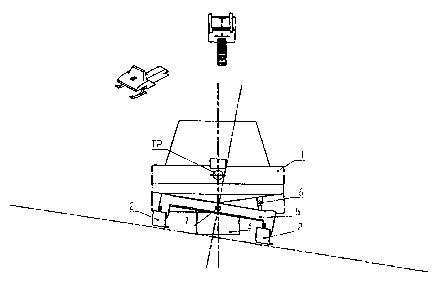Some of the information on this Web page has been provided by external sources. The Government of Canada is not responsible for the accuracy, reliability or currency of the information supplied by external sources. Users wishing to rely upon this information should consult directly with the source of the information. Content provided by external sources is not subject to official languages, privacy and accessibility requirements.
Any discrepancies in the text and image of the Claims and Abstract are due to differing posting times. Text of the Claims and Abstract are posted:
| (12) Patent Application: | (11) CA 2364097 |
|---|---|
| (54) English Title: | METHOD AND DEVICE FOR INCREASING THE STEERING FORCE OF SNOW MOBILES STEERABLE BY MEANS OF A PAIR OF FRONT SKIS |
| (54) French Title: | METHODE ET DISPOSITIF POUR ACCROITRE LA FORCE DE GUIDAGE DES MOTONEIGES QU'ON PEUT ORIENTER AU MOYEN D'UNE PAIRE DE SKIS A L'AVANT |
| Status: | Deemed Abandoned and Beyond the Period of Reinstatement - Pending Response to Notice of Disregarded Communication |
| (51) International Patent Classification (IPC): |
|
|---|---|
| (72) Inventors : |
|
| (73) Owners : |
|
| (71) Applicants : |
|
| (74) Agent: | ROBIC AGENCE PI S.E.C./ROBIC IP AGENCY LP |
| (74) Associate agent: | |
| (45) Issued: | |
| (22) Filed Date: | 2001-11-30 |
| (41) Open to Public Inspection: | 2002-06-01 |
| Availability of licence: | N/A |
| Dedicated to the Public: | N/A |
| (25) Language of filing: | English |
| Patent Cooperation Treaty (PCT): | No |
|---|
| (30) Application Priority Data: | ||||||
|---|---|---|---|---|---|---|
|
A method and device is disclosed for increasing the steering
force of track-driven snowmobiles being steered by means of a
pair of resiliently suspended front skis. In order to obtain
this effect when steering from the central neutral position,
the vertical spacing of the curve-outer ski from the snowmo-
bile body is increased intentionally, in order to tilt said
body towards the centre of the curve and thereby transferring
more of the snowmobile weight to the inner ski and thus in-
crease the steering pressure force thereof on the surface.
Note: Claims are shown in the official language in which they were submitted.
Note: Descriptions are shown in the official language in which they were submitted.

2024-08-01:As part of the Next Generation Patents (NGP) transition, the Canadian Patents Database (CPD) now contains a more detailed Event History, which replicates the Event Log of our new back-office solution.
Please note that "Inactive:" events refers to events no longer in use in our new back-office solution.
For a clearer understanding of the status of the application/patent presented on this page, the site Disclaimer , as well as the definitions for Patent , Event History , Maintenance Fee and Payment History should be consulted.
| Description | Date |
|---|---|
| Application Not Reinstated by Deadline | 2007-11-30 |
| Time Limit for Reversal Expired | 2007-11-30 |
| Inactive: Abandon-RFE+Late fee unpaid-Correspondence sent | 2006-11-30 |
| Deemed Abandoned - Failure to Respond to Maintenance Fee Notice | 2006-11-30 |
| Inactive: IPC from MCD | 2006-03-12 |
| Inactive: IPC from MCD | 2006-03-12 |
| Application Published (Open to Public Inspection) | 2002-06-01 |
| Inactive: Cover page published | 2002-05-31 |
| Inactive: First IPC assigned | 2002-02-01 |
| Inactive: Filing certificate - No RFE (English) | 2002-01-10 |
| Application Received - Regular National | 2002-01-08 |
| Filing Requirements Determined Compliant | 2002-01-08 |
| Inactive: Filing certificate - No RFE (English) | 2002-01-08 |
| Abandonment Date | Reason | Reinstatement Date |
|---|---|---|
| 2006-11-30 |
The last payment was received on 2005-11-14
Note : If the full payment has not been received on or before the date indicated, a further fee may be required which may be one of the following
Please refer to the CIPO Patent Fees web page to see all current fee amounts.
| Fee Type | Anniversary Year | Due Date | Paid Date |
|---|---|---|---|
| Application fee - standard | 2001-11-30 | ||
| MF (application, 2nd anniv.) - standard | 02 | 2003-12-01 | 2003-11-06 |
| MF (application, 3rd anniv.) - standard | 03 | 2004-11-30 | 2004-11-03 |
| MF (application, 4th anniv.) - standard | 04 | 2005-11-30 | 2005-11-14 |
Note: Records showing the ownership history in alphabetical order.
| Current Owners on Record |
|---|
| JAN-ERIK ROVA |
| Past Owners on Record |
|---|
| None |